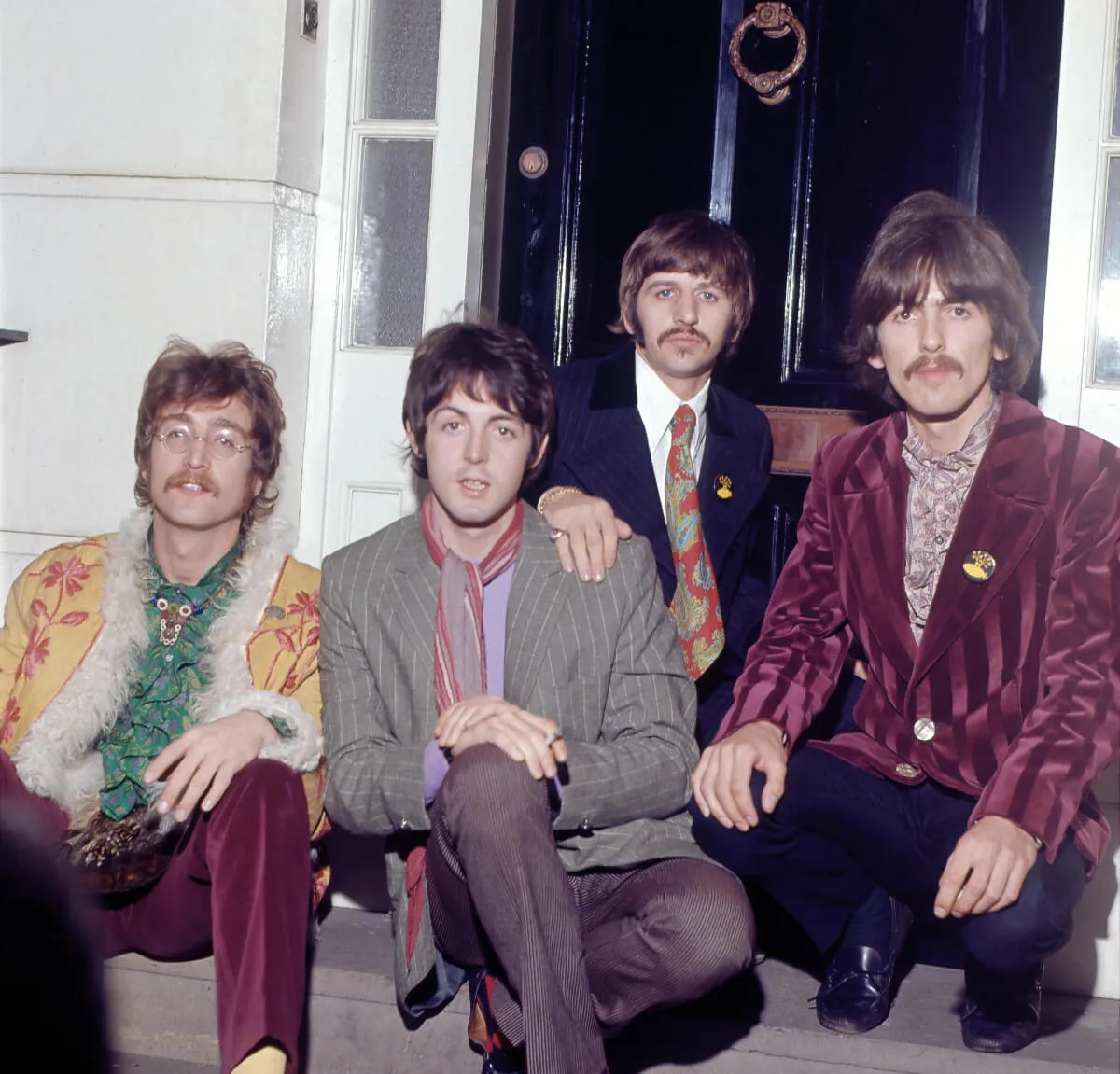Inside John Wayne Gacy Murder and Grave Locations That Inspired Netflix Documentary ‘Conversations With a Killer: The John Wayne Gacy Tapes’
The Netflix documentary series Conversations with a Killer: The John Wayne Gacy Tapes reveals further secrets behind one of the most prolific serial killers in American history. These horrific murders happened in Illinois. Here’s a closer look at the real-life Gacy murder and victim grave locations.
John Wayne Gacy picked up his first victim, Timothy McCoy, from the Greyhound bus station
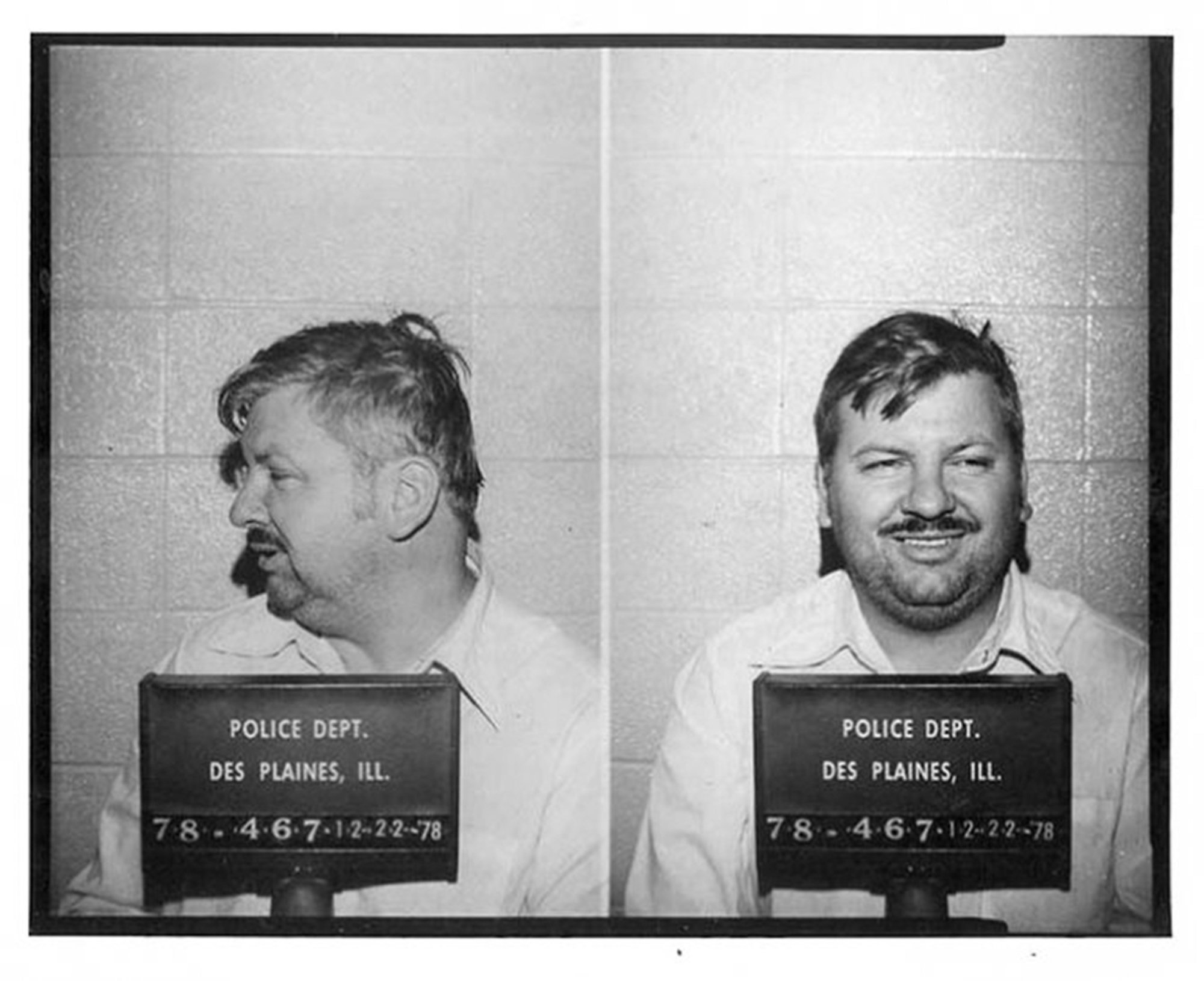
The Scott on Tape YouTube channel took viewers around the Gacy locations where heinous crimes took place. Scott first introduces the location of the first victim, 16-year-old Timothy McCoy.
The host points to a blue car parked by the curb at the corner of Clark and Randolph in downtown Chicago. He explains how that used to be the location for the Greyhound bus station. This is the location where Gacy picked up McCoy.
Gacy took McCoy to the location of his home, where they drank, engaged in sexual acts, and he proceeded to stab the teenager to death. Next, he buried him in the crawl space of his home.
The serial killer ‘dumped’ the bodies of his victims under the Interstate
The next Gacy location is the Interstate 55 Bridge, which goes over the Des Plaines River. It’s located right outside of Joliet, Illinois. This is the location where Gacy “dumped” five bodies into the river below.
Scott shows the Interstate along with the Des Plaines River. He plays some somber music over the imagery of the river, where Gacy dumped five lifeless bodies.
John Wayne Gacy was a maintenance man at a location in the area
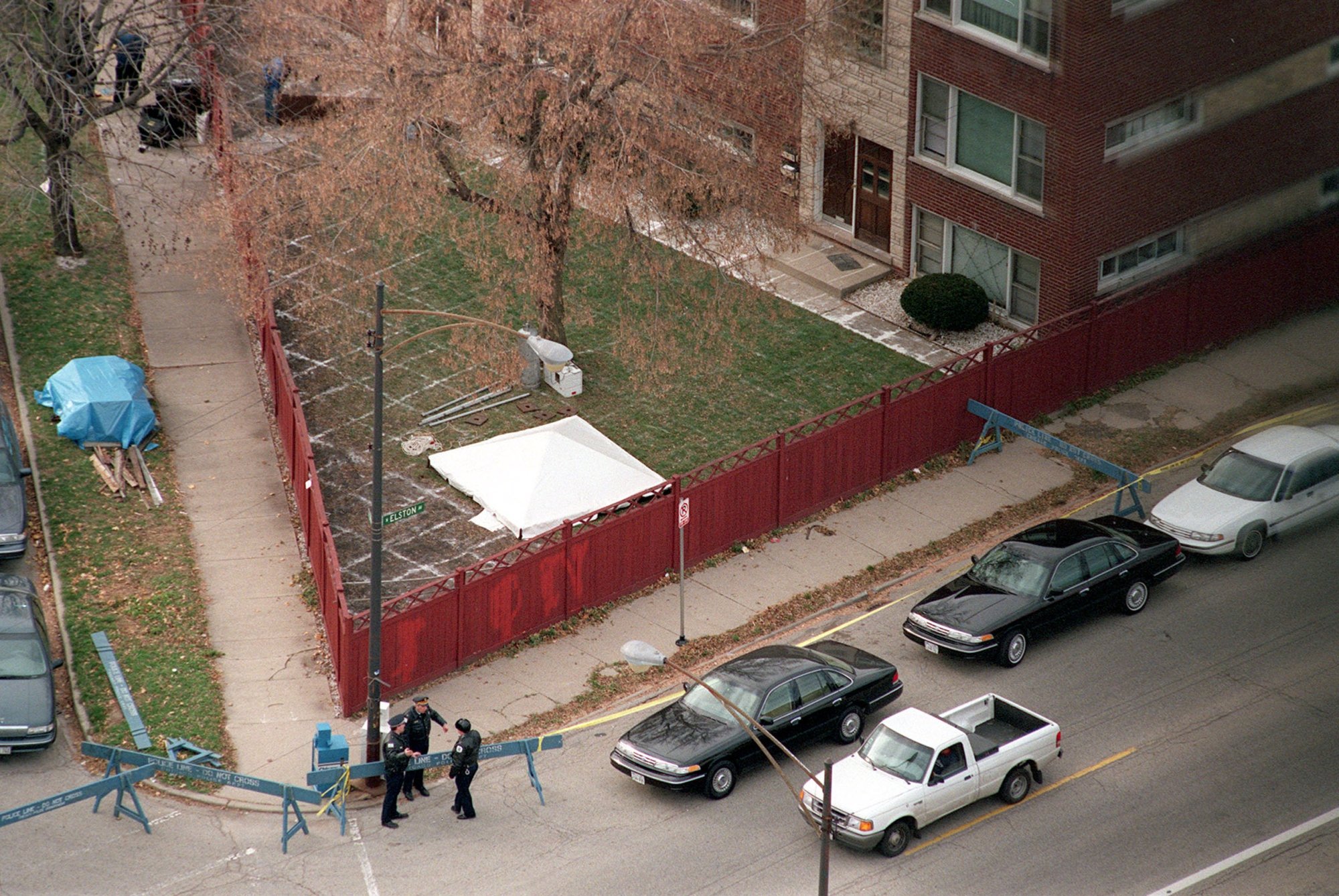
Scott takes viewers to the next Gacy location at the intersection of Elson and Miami. He explained that after the police discovered the bodies at the killer’s home, an officer remembered a specific detail. Gacy was a maintenance man at a building at this street intersection.
Gacy was once at the location seen digging in the middle of the night on the front lawn. The police officer asked what he was doing and he responded something along the lines of, “You know, not enough hours in the day.” Neighbors noted that they saw him digging trenches in the same area.
However, this information didn’t come out until later. The police didn’t initially want to re-open the case to examine the area, but they had no choice.
Scott explains that they didn’t do a thorough search and nothing was found. However, locals believe that there are more victims possibly buried underneath that lawn.
Gacy also moved his own mother into an apartment building at the same location, as well. Scott shows the “simple little building” that clearly isn’t new construction with a deteriorating fence.
John Wayne Gacy picked up his final victim, Robert Piest, at a pharmacy
Scott appears particularly uncomfortable when taking viewers to the location where Gacy picked up his final victim, 15-year-old Robert Piest. The killer asked the teenager for help with construction work, which is one of the primary ways that he lured in his victims. He also dressed as a clown to bring in young boys.
Piest worked at the pharmacy. He told his mother that he was talking to Gacy about a construction job, who was waiting outside to pick him up. Unfortunately, Piest never returned.
Scott is standing across the street from the location that is no longer a pharmacy. However, he’s keeping his distance because the Gacy-associated location is now a preschool and daycare. Scott initially thought it was a restaurant from his online research. Given the sensitive location, he filmed from a distance.
However, the liquor store next door also gives away the location. Next, the video displays a photograph of Piest and the inside of the pharmacy when it once existed.
The serial killer makes his first confession to his lawyer

On December 20, 1978, Gacy made his first confession to his lawyer at the next location. It lasted for hours overnight. The building now has a sign in front of it that reads AANA (American Association of Nurse Anesthesiology).
The same somber music plays as he shows a few shots around the building, but he never goes inside.
The police kept the ‘significant’ items from John Wayne Gacy and his victims
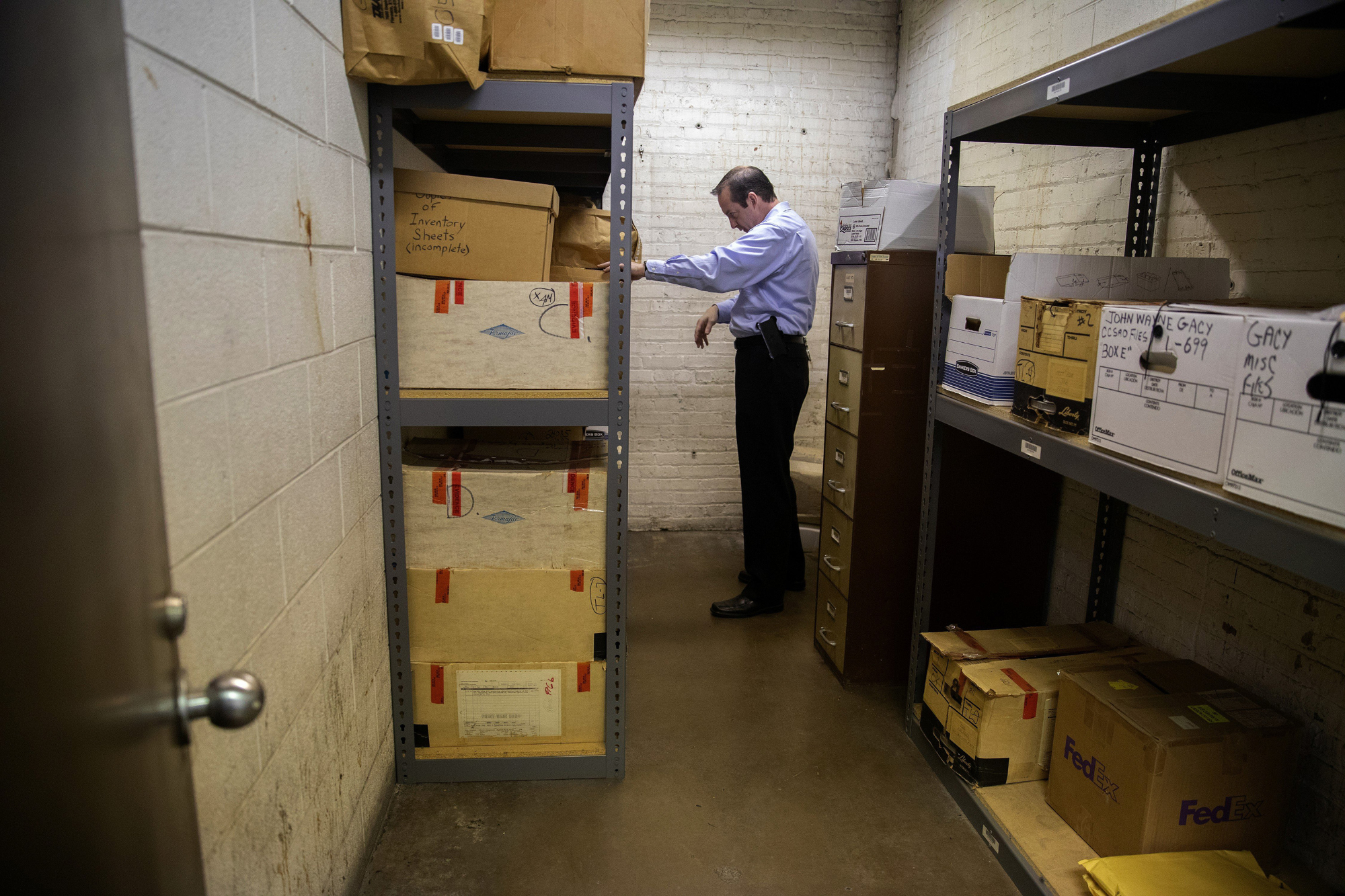
Scott next takes his viewers to a Gacy location that is particularly fascinating. It appears to be a simple, suburban street with houses and stores. However, he takes particular interest in a giant warehouse, which belongs to the Cook County Sheriff’s Department.
Inside the building, there’s an entire room dedicated to Gacy. They keep items of “significance” to the serial killer and his victims that they found at the scene of the crime. Next, Scott shows some of the items that are likely stored inside, including clothes, jewelry, and case files.
The haunting location of John Wayne Gacy’s house
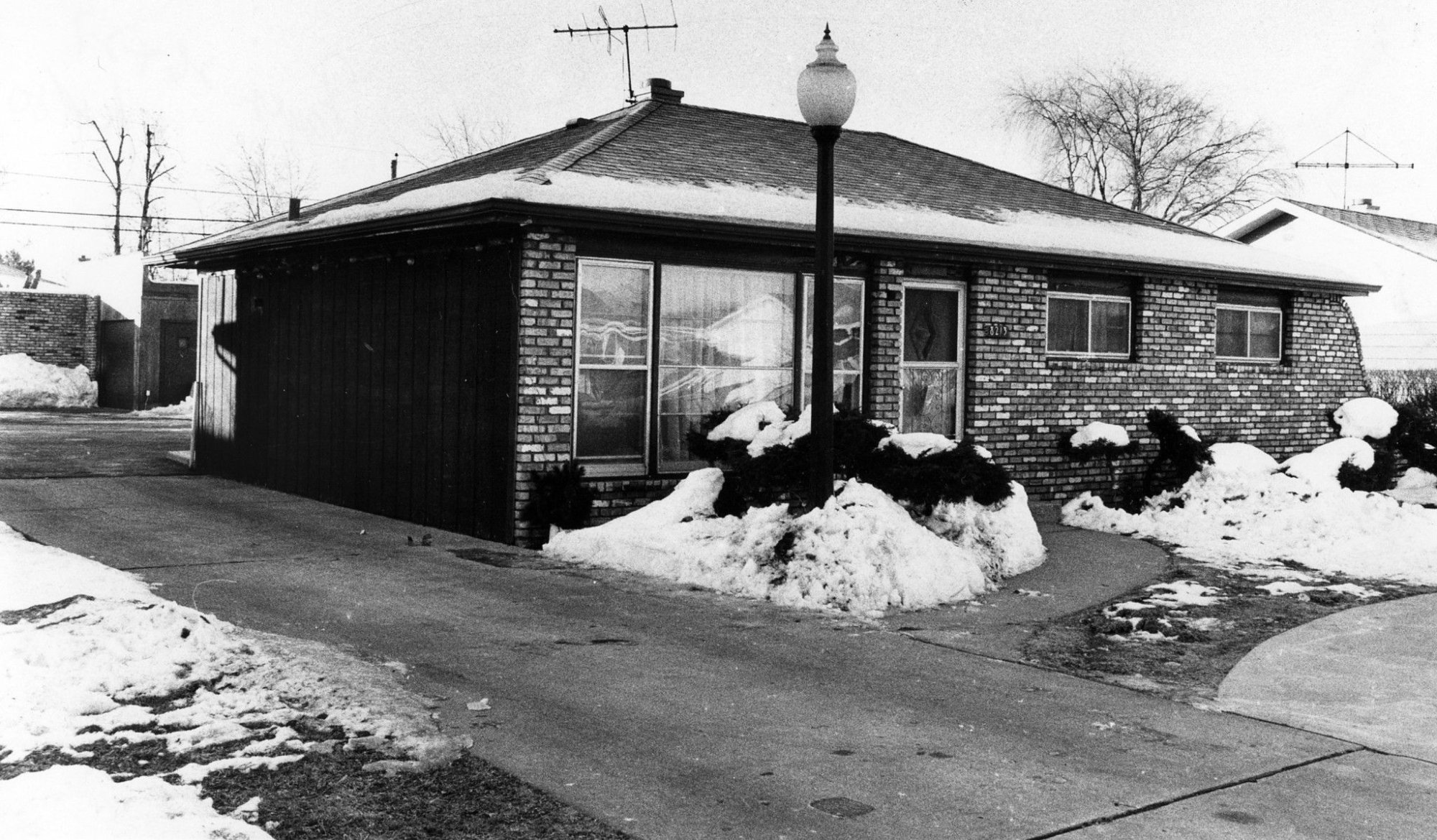
The next segment doesn’t need any introduction from Scott – the location of Gacy’s home. The house was torn down and replaced with another house. However, he displays photographs of the building both past and present. Scott includes pictures of the victims’ bodies getting carried out of the home.
Scott then puts in a sort of memorial, as he honors Gacy’s known victims with their photographs over music with a very different tone.
The victims’ graves
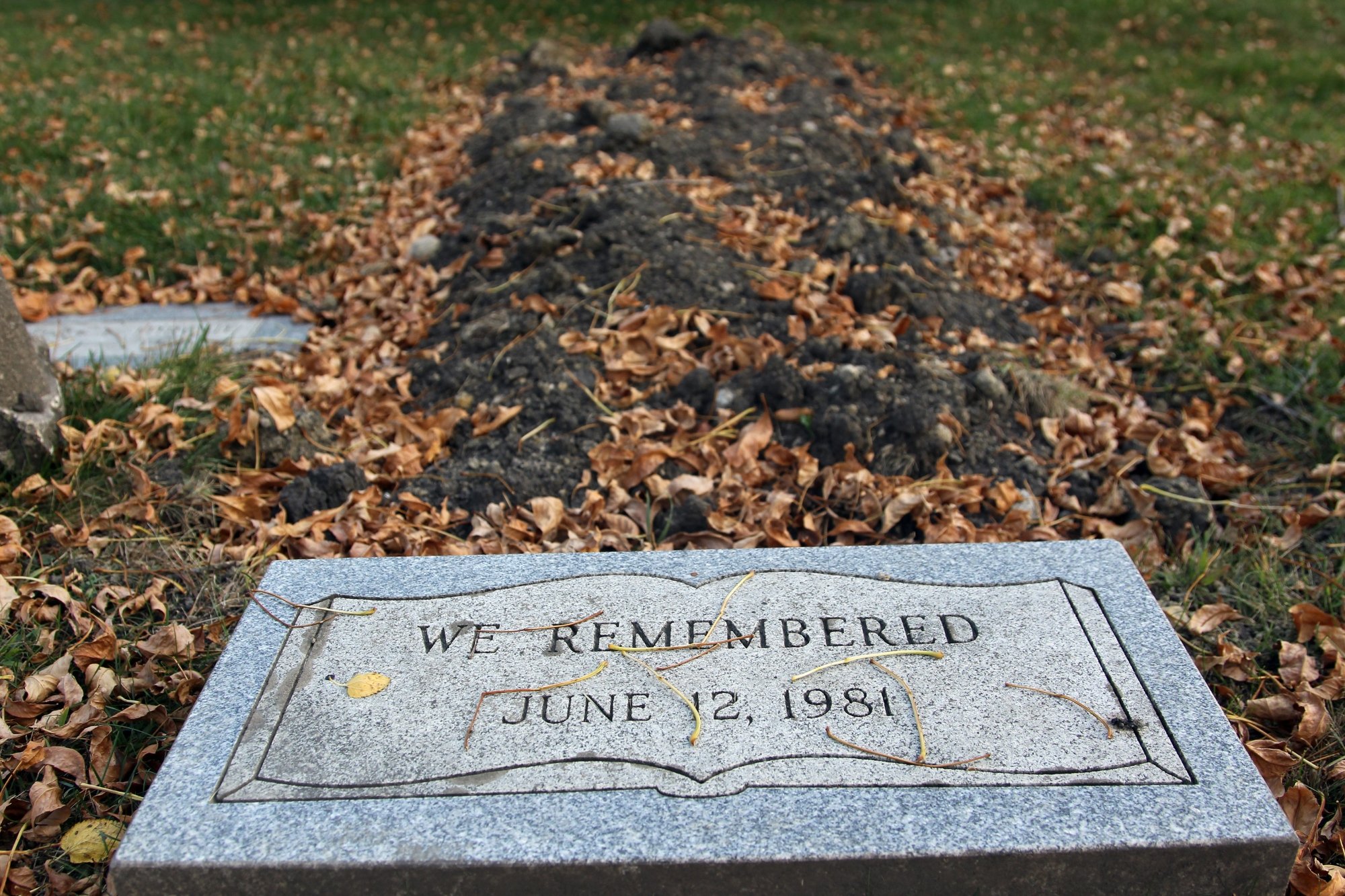
Scott explains how there were originally nine unidentified victims of the serial killer. However, that number went down to six over the years. They had a funeral for all nine in 1981 at the funeral home right nearby where he stood.
The remains of eight of the young men and boys were taken to various cemeteries across Illinois. However, Scott goes to one particular grave at Oak Ridge Cemetary. He chose this particular location because it’s the grave of an unknown victim, who he feels most people won’t be thinking to visit.
Scott approaches a grave with the words “We Remembered” engraved on the stone with the date June 12, 1981. He left a stone in honor of the unidentified victim and dusted the grave marker off.
Conversations with a Killer: The John Wayne Gacy Tapes hits Netflix on April 20.

